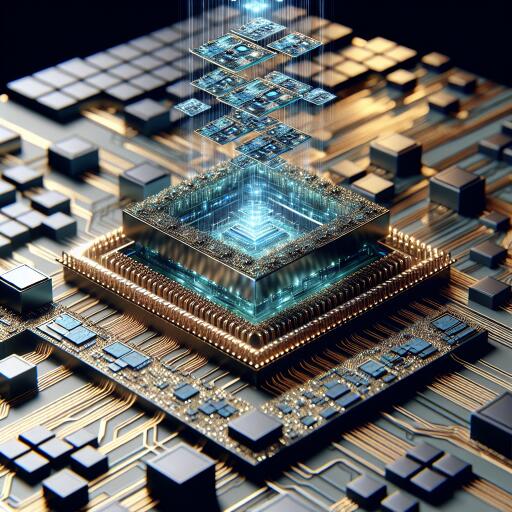The Evolution of Semiconductors: Navigating Through Chiplets and the Emergence of 3D-ICs
In an era progressively defined by digital intricacies, the semiconductor industry stands as the cornerstone of technological advancement. These tiny yet powerful chips are integral to everything from the smartphones in our pockets to the sprawling servers that form the backbone of the cloud. As devices evolve, becoming more compact and tasked with handling a growing variety of functions, the push towards maximizing the capabilities of semiconductors has never been more critical.
Meeting these demands has traditionally followed Moore’s Law, focusing on reducing the size of transistors to pack more power into each chip. However, the advent of artificial intelligence (AI), machine learning (ML), and high-performance computing (HPC) has shifted the paradigm, highlighting the need for innovative approaches to boost performance while curbing power consumption. This need has ushered in the era of chiplets and 3D integrated circuits (3D-ICs), offering a new blueprint for semiconductor design and manufacture.
Revolutionizing Design with Chiplets
Chiplets represent a significant departure from conventional semiconductor design, promising increased density and performance without the drawbacks of miniaturization. They find their place in a myriad of applications, from mobile devices and automotive technologies to data centers and AI processing. The essence of chiplets lies in their ability to optimize design efficiency by allowing for the selection of the most suited process nodes for each function. This not only reduces faults but also cuts costs and accelerates the time to market.
Moreover, chiplets provide unparalleled flexibility by enabling the combination of different advanced nodes for specific functions within the same semiconductor, thus circumventing the hurdles of full die shrinkage. However, this marvel of engineering is not without its challenges. Interoperability stands out as a significant concern, with the industry leaning towards the establishment of unified standards such as the Universal Chiplet Interconnect Express (UCIe) to ensure seamless integration of chiplets from various manufacturers into a single cohesive unit.
Challenges Ahead and Solutions on the Horizon
The growth of heterogeneous chiplet integration is palpable, with key industry players including AMD, Intel, and TSMC, among others, spearheading innovation. Yet, the journey towards widespread adoption of SoC designs leveraging chiplets is fraught with complexities. One of the most pressing challenges is the need for industry-wide standardization to facilitate interoperability among chiplets from different vendors.
As the industry navigates these waters, a collective effort towards creating open-source standards like UCIe is crucial. Moreover, ensuring that various chiplets integrate seamlessly, without compromising the system’s integrity or performance, presents a logistical puzzle. The industry’s commitment to this cause is evident in the development of new standards and algorithms aiming to enhance compatibility, heat dissipation, and power efficiency. A shift towards a more agile and networked supply chain model, augmented by AI and blockchain, could further catalyze innovation in this space.
The Future Beckons
While 3D-IC technology is still burgeoning, its potential to transform the semiconductor landscape is undeniable. The shift towards chiplet-based designs is not merely a trend but a strategic imperative, driven by the relentless pursuit of innovation in a digital age defined by connectivity. This movement is underpinned by robust initiatives like the US CHIPS Act, aimed at reinforcing semiconductor research and packaging prowess. With the semiconductor industry projected to see significant growth in the coming years, the urgency for technologies that marry vast computing capabilities with efficiency has never been higher. Chiplets and 3D-ICs, with their promise of compact, high-performance solutions, are poised to lead the charge into a future where the possibilities are as limitless as the technologies they will enable.










